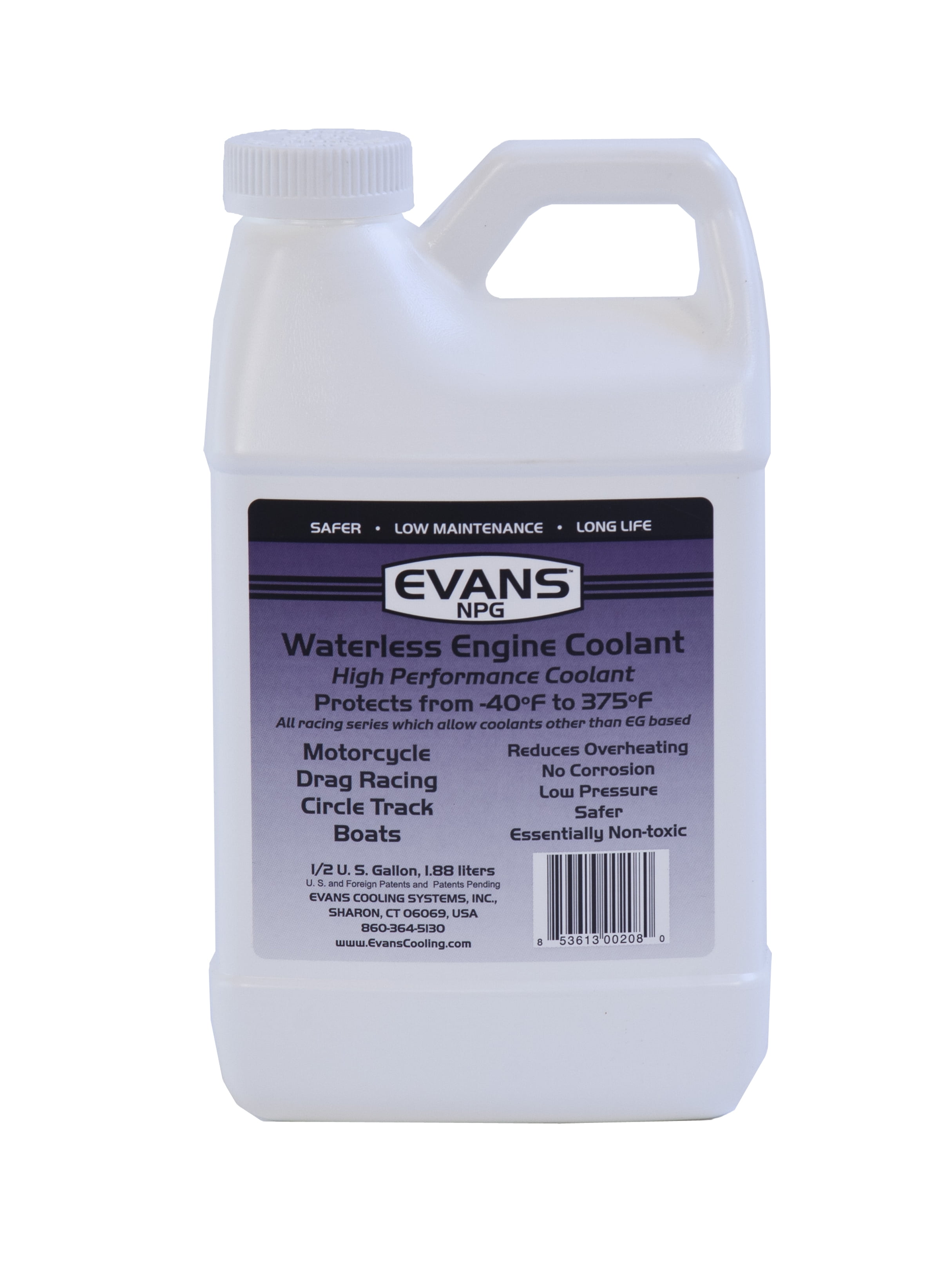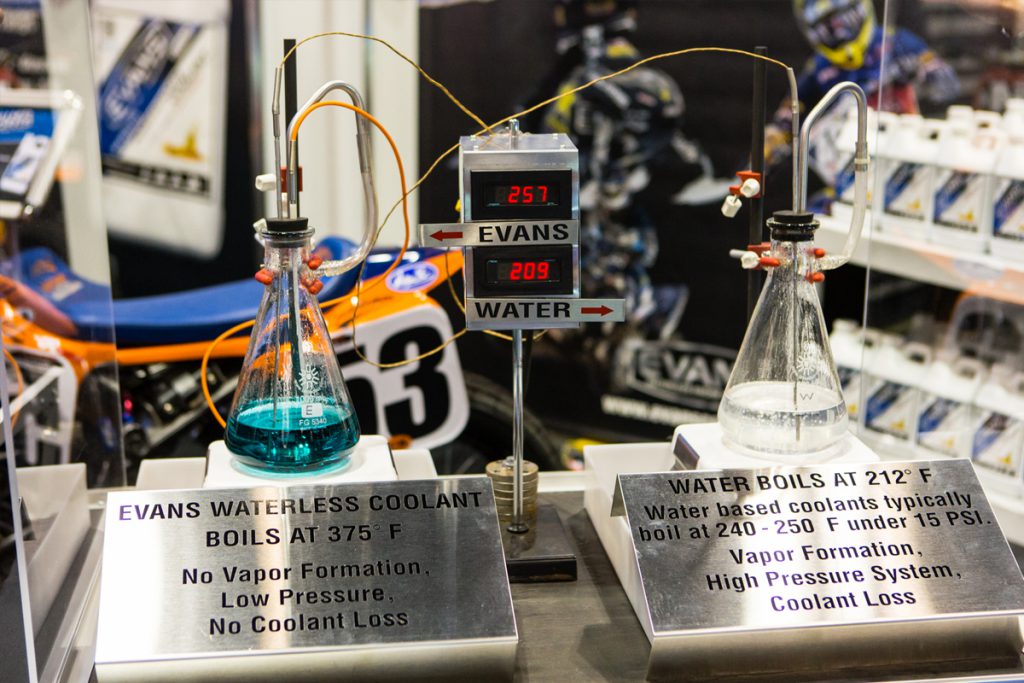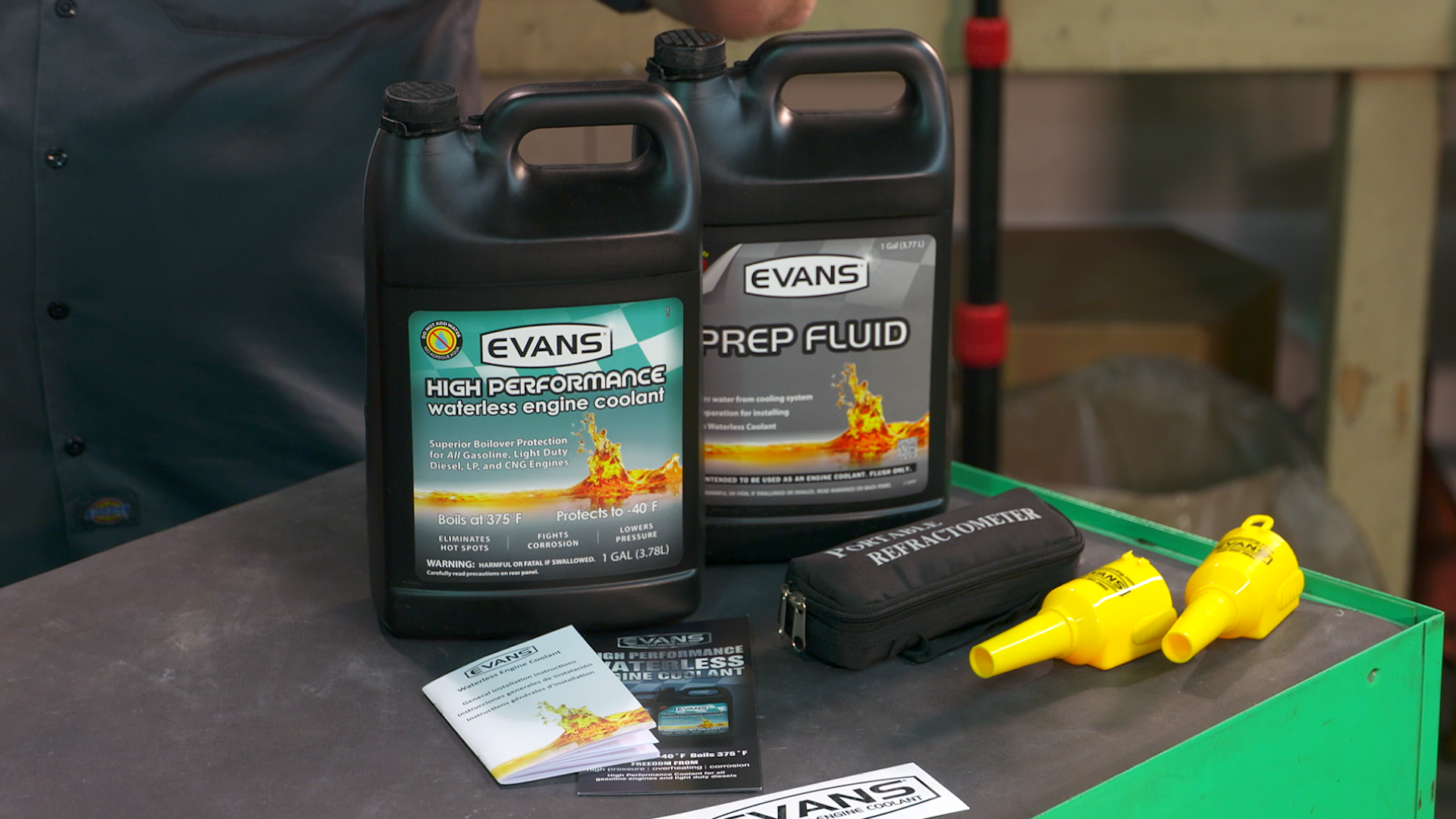
?Don?t open the bonnet ! turn off the electric cut-out ! everybody round to the right hand side of the car ! pull the pins on your extinguishers and get ready !? I was extremely lucky to be right at the fire point ! I have some firefighting training and experience, but I have to hand it to the man in charge. With my race gloves still on, I could not manage to release the locking catch.īy the time I got my gloves off and released the extinguisher, the Chief Marshall and at least 4 other marshalls who were on the start line fire point were ready to go with 4 x 7kg extinguishers.
#Evans coolant cleans system driver#
Succeeding in getting out, I then attempted to release the 2kg AAAF extinguisher under the front of the driver seat. The first problem was, with my helmet on, I was getting stuck in the door opening. I turned the ignition off ( I did not think to turn off the dash electrics cut-off switch ) and attempted to get out of the car.

The next thing was there was a burst of black smoke from the gap in the bonnet opening, quickly followed by a sheet of flame. I could see the engine temperature had gone off scale +140 C, but I had seen that before. So I was sitting in the car, suited up, gloved, helmet on. There was some hold up, as the queue was moving forward very slowly. We were on a narrow country road, with banks and high hedges on each side. I got a staff member with a big SUV to give me a jump start, and I headed off the two miles to the event.īy the time I got there I was late, and I had to immediately join the start queue, changing into my race gear on the side of the road, not daring to turn the engine off, what with the flat battery. It kept kicking back, until eventually the battery was totally flattened. However, when I got up the following morning and was leaving my accommodation to go to the event, no way would the cold engine start. The engine seemed to be running very well all the way. That week-end I drove around 100 miles to the event. However it did start, and there was a noticeable increase in power on my 15 mile drive home. It seemed to me that there was excessive static advance. Starting up afterwards I noticed there was a lot of kickback. I proceeded to my local rolling road, and had him set it up using the initial map. I achieved a long term ambition of fitting a mapped ignition system (DTA ) with a Valeo twin-coil pack. However this summer I had an unfortunate set of circumstances that almost ended in disaster. I even managed the 40 mile drive home afterwards without the engine failing.


) at the end of each run, and I was leaving a smokescreen behind that would hide a battle-ship. The temp gauge would be off-scale high ( 140 C.

In fact, one hill-climb weekend I was able to do 5 runs each day over the two days with a blown head gasket. It?s not highly inflammable, but if it drips on to your exhaust pipe (my rad filler cap is on the thermostat housing ), or if it gets into the cylinders due to gasket failure, it creates quite a dense white smoke from the exhaust If you spill it on the garage floor or on paving it does not evaporate, due to the high boiling point/low volatility. Two undesirable characteristics I discovered were :ġ. The fact that Evans coolant has a boiling point of 190 C meant that coolant would never boil and blow the rad cap.Įvans also make a point of telling how it prevents local boiling at hotspots in the cylinder head, but on reflection, I can?t say they have ever been evident or have been a problem. So a system that has practically no pressure was attractive, the coolant hoses and joints were not pressurised, you could come off the track and remove the rad cap straightaway to check coolant level. What influenced me was that over the years I have had quite a few problems with water leaks, burst hoses, loose connections, as well as a few blown head gaskets. I converted my water/antifreeze cooling system to Evans waterless coolant about 5 years ago. Here is my experience with Evans coolant.


 0 kommentar(er)
0 kommentar(er)
